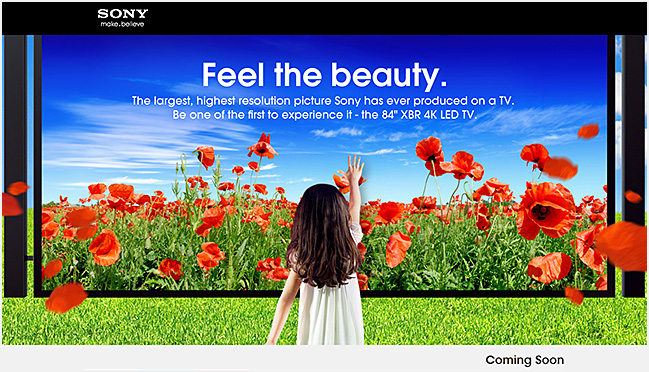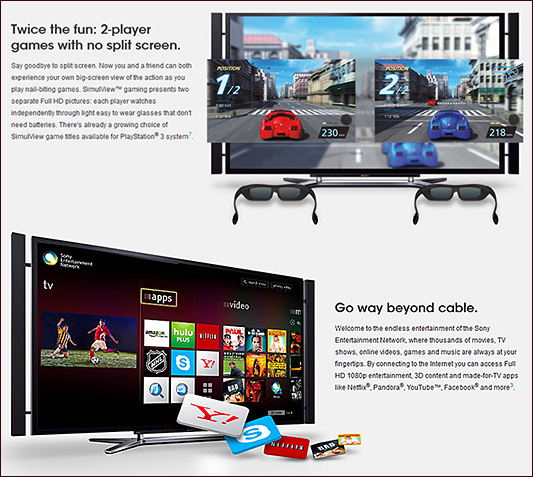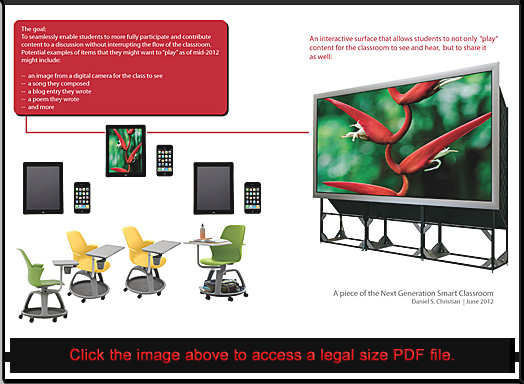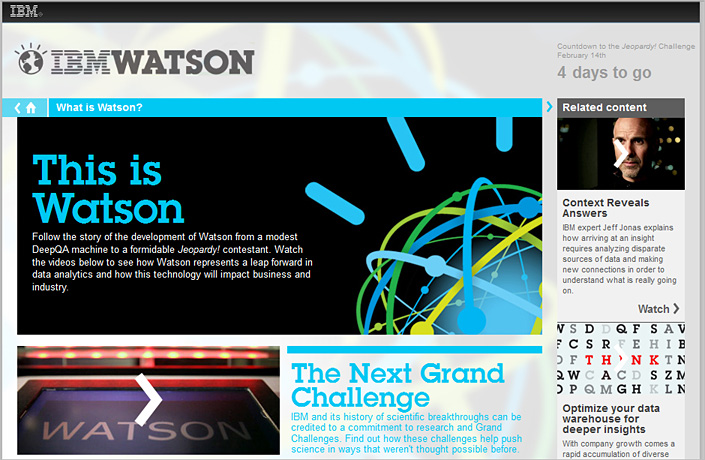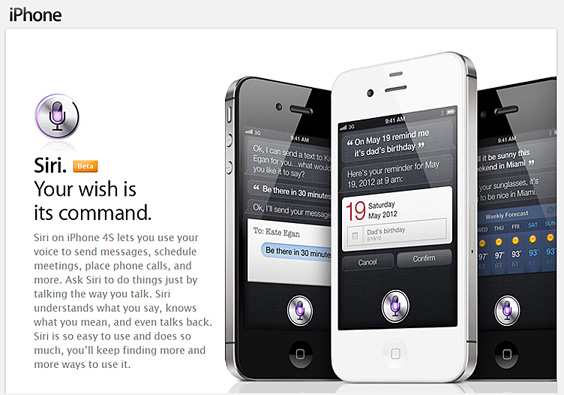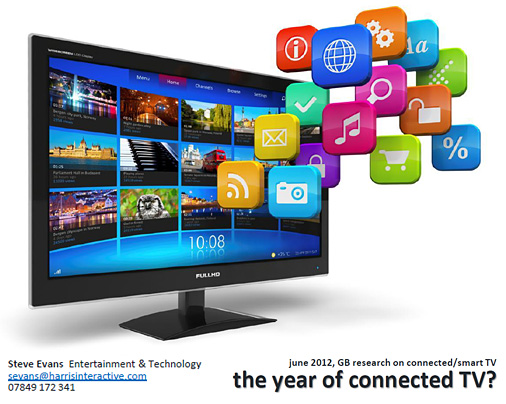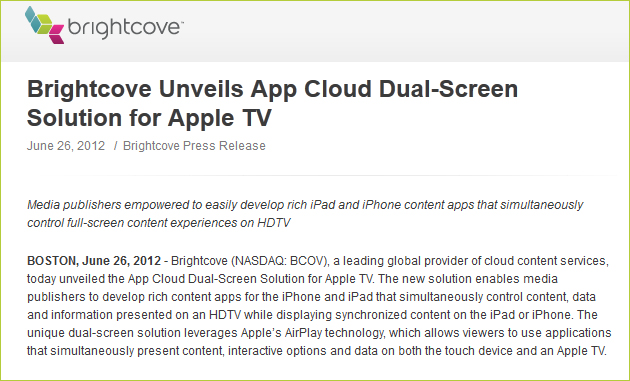
From DSC:
Apple has been putting together a solid ecosystem of hardware and software that allows for the creation and distribution of content. “Easy is hard” I like to say and Apple’s done a great job of creating easy-to-use devices and apps. They have a long way to go before iTunes U has all the built-in functionality needed to replace a Blackboard Learn or a Moodle type of CMS/LMS. But given their solid history of creating highly-usable hardware and software, they could deal a smashing blow to what’s happening in the CMS/LMS world today.
Plus, with Apple TV, Airplay mirroring, the growth of second screen-based apps, and machine-to-machine communications, Apple is poised to get into this game…big time. If my thoughts re: “Learning from the Living [Class] Room” come to fruition, Apple would be positioned for some serious worldwide impact on lifelong learning; especially when combined with the developments such as the use of MOOCs, AI and HCI-related innovations, learning agents, web-based learner profiles, and potential/upcoming changes to accreditation.
Too far fetched do you think? Hmmm….well considering that online learning has already been proven to be at least as affective as f2f learning — and in some studies has produced even greater learning outcomes/results — I wonder how things will look in mid-2015…? (That is, where is the innovation occurring?)
Addendum:
- Connected TV penetration to top 50% by 2017 — from worldscreen.com by Mansha Daswani
Excerpt:
SCOTTSDALE: ABI Research forecasts that more than 50 percent of television homes in North America and Western Europe will have Internet-connected TV sets by 2017, up from just 10 percent last year, while Blu-ray player penetration is expected to rise to more than 76 percent from about 25 percent. The report notes that the popularity of connected TV is not limited to developed markets—there have been increasing shipments to China, ABI notes.
.
- Advertisers need to pay attention to connected TV [INFOGRAPHIC] — from Mashable.com
.
- The future of TV is two screens, one held firmly in your hands — from FastCompany.com by Kit Eaton
Excerpt:
The connected TV, sometimes called the smart TV (and even branded as such by Samsung) is a growing phenomenon: TV makers are adding limited apps, Net connectivity, and even streaming media powers to their newer TVs in the hope they’ll persuade you to upgrade your newish LCD for a flatter, smarter unit. They’re desperate to, given how flat this market is. But according to new research from Pew, the future of TV may actually be a little more closely aligned with the notion of a “connected TV viewer,” an important distinction. Pew spoke to over 2,200 U.S. adults a couple of months ago and discovered that 52% of all adult cell phone owners now “incorporate their mobile devices into their television watching experiences.”










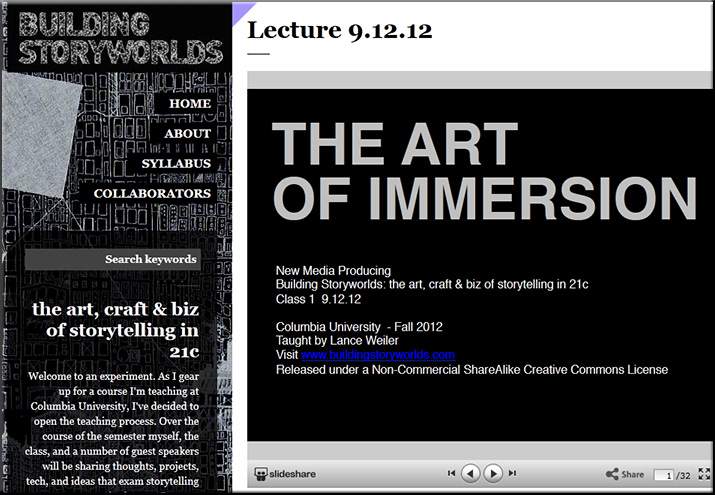



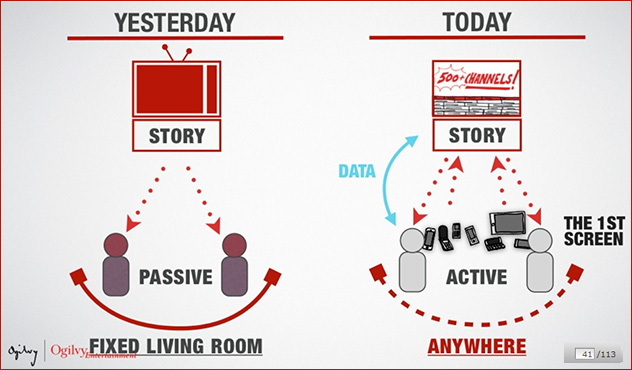
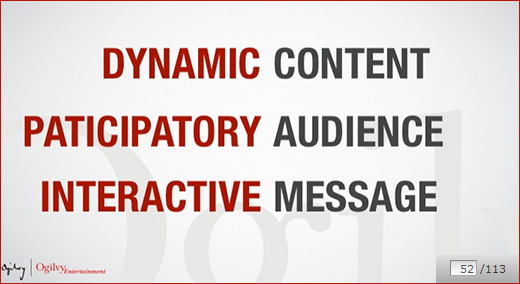
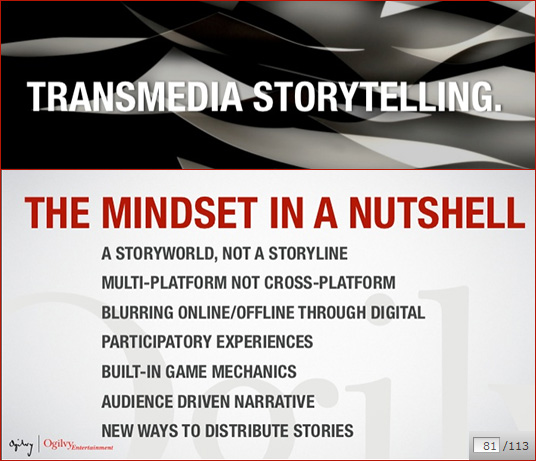
![The-Living-Class-Room-Daniel-S-Christian---July-2012 The Living [Class] Room -- by Daniel Christian -- July 2012 -- a second device used in conjunction with a Smart/Connected TV](http://danielschristian.com/learning-ecosystems/wp-content/uploads/2012/07/The-Living-Class-Room-Daniel-S-Christian-July-2012.jpg)
